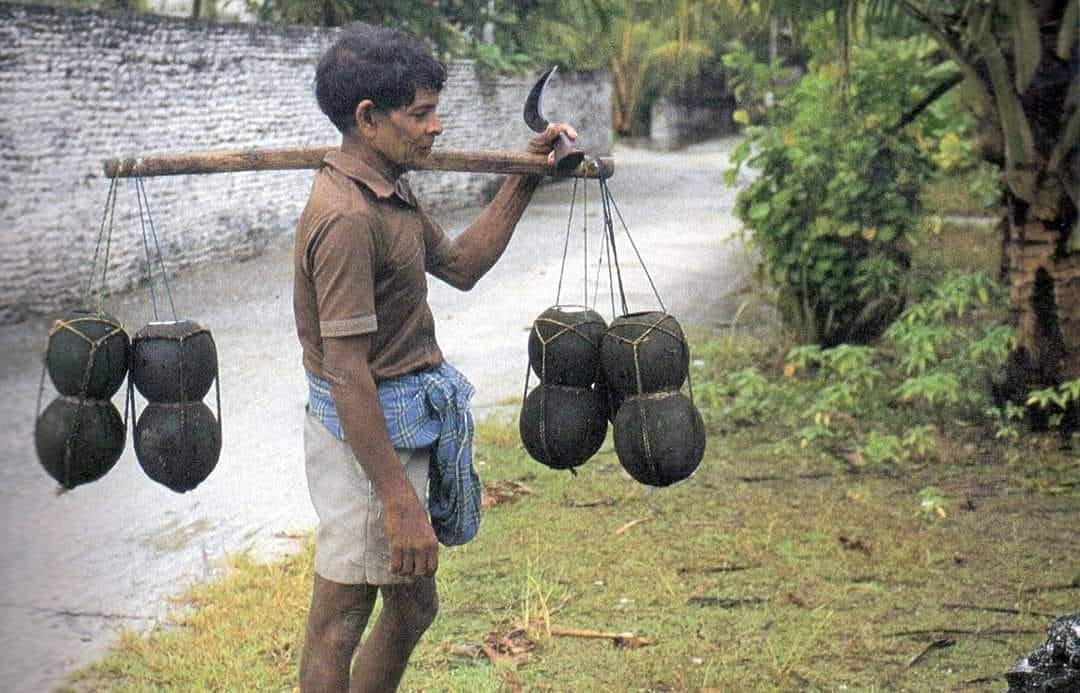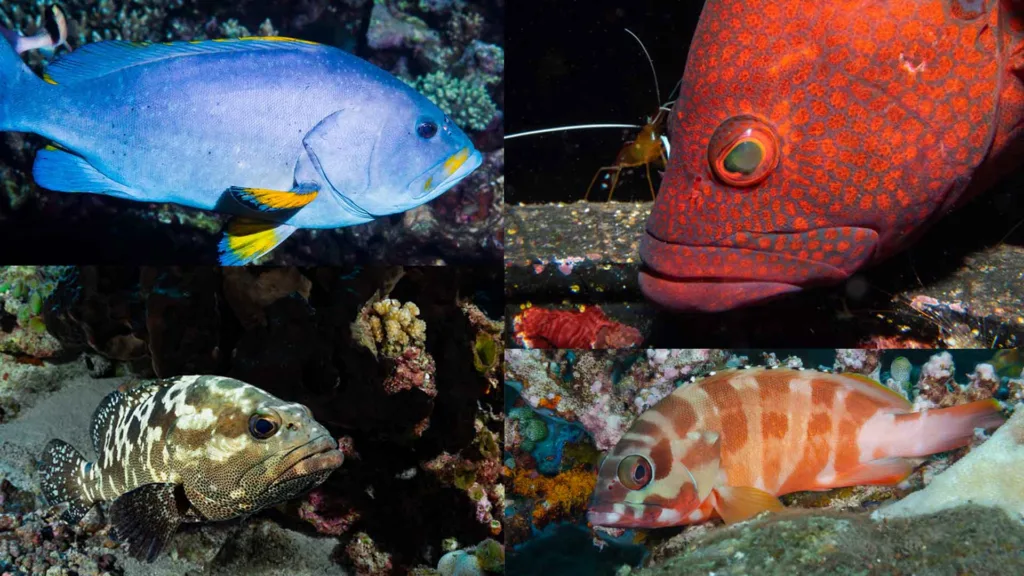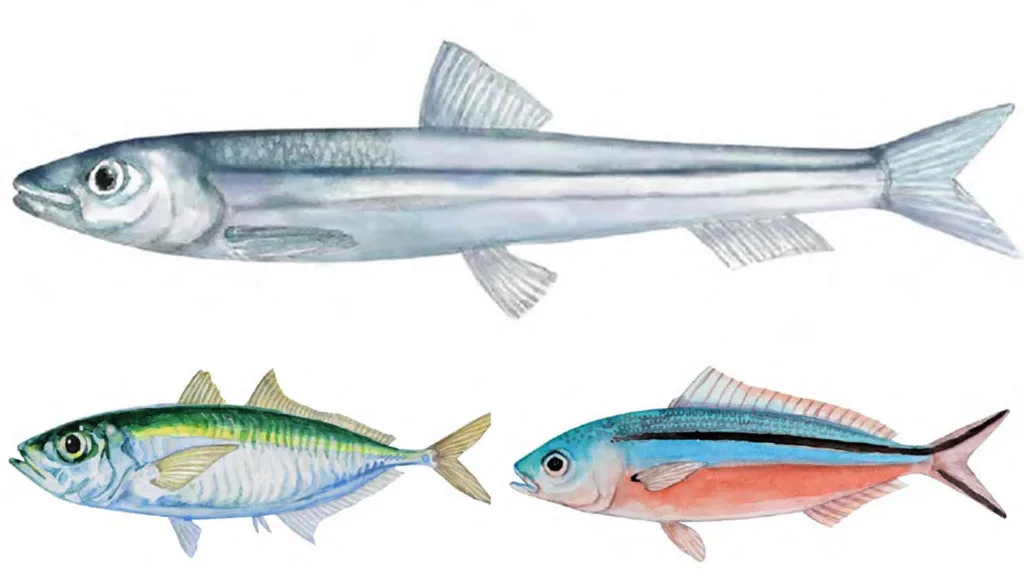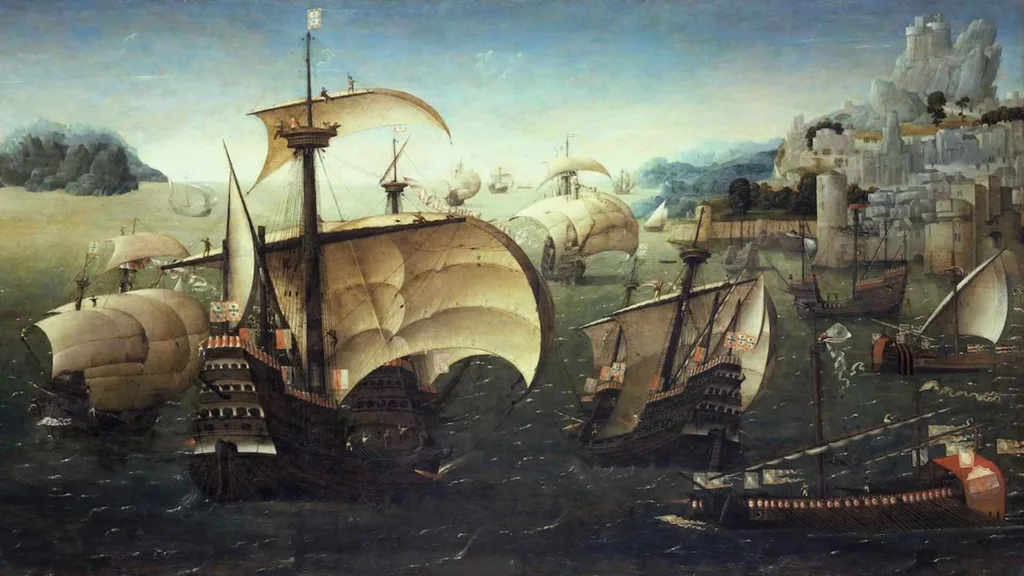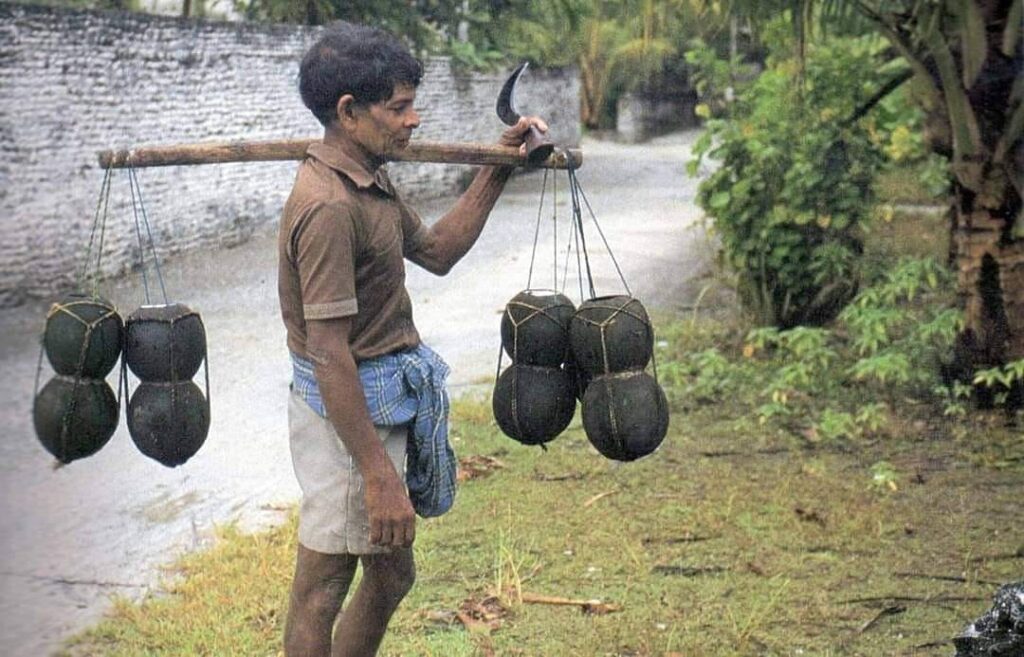
Toddy tapping symbolises Maldivian culture and traditions. In earlier times, it was the main source of income. It made a significant contribution to the residents’ prosperity. However, this practice has almost died out and is now lost to history. Toddy tapping, sometimes referred to as “ru erun” or “raa verikan,” is a technique that fathers teach their sons.
In order to produce the sap, the tapper Raaveriya first ripens the unopened inflorescence, or flower buds, of the coconut palm. Using a chisel-like knife, the toddy tapper carefully and precisely cuts the tip of the unopened inflorescence before wrapping it with a screw pine leaf after first wrapping dry screw pine leaves on the inflorescence. Following this procedure, the coconut palm is referred to as a raa rui, which indicates that it will produce sap.
The above steps are finished, and a decorated pot made from coconut shells is put into the tip of the inflorescence and covered with dry screw pine tree leaves. Overnight, the container is left to fill.
Twice daily, the toddy tapper ascends each coconut palm. He would climb the palm in the morning to gather sap, and then he would do it again later in the day.
The sap that is harvested in the evening is reputed to have the best flavour. It’s nice. The evening toddy is the sweetest; the sweetness varies according to the time of collection. It smells strong, but it tastes good.
The past
While battling the Portuguese, King Ali VI received assistance from a toddy tapper from Villingili. During the Maldives’ struggle for independence from the Portuguese, the renowned Mohamed Thakurufaan received support from tappers from Dhonakulhi and Maroshi islands. They provided resources and food.
Early in the 20th century, Toddy played a significant role in the Maldives’ economy. Direct import and export commerce between these three atolls and the rest of the world, especially Sri Lanka, was once common. “Bondi haluwa,” a sweetened toddy product, was one of the most famous exports.
In addition to being sold, toddler products were used as food on lengthy sea voyages that lasted two to three months.
There were several uses for Toddy. It transforms into Dhiyaa hakuru, a sugary liquid, when heated. Rice is served alongside it. It is also a component of sweets and desserts.
This syrup turns into a creamy-white paste if it is cooked for a long time over low heat with a pinch of sugar and small pebbles.
Additionally, people fermented toddy and produced vinegar, which is used as a preservative in regional pickles and to flavour other foods.
This practice has faded into history. The practice of toddler tapping has almost entirely disappeared. The only people who still tap are old men who have a lifelong habit of doing it. Present-day toddy tappers claim that it is very challenging to carry on the work.
